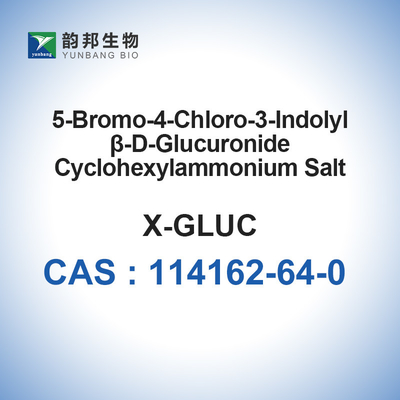| Hazard Codes |
Xi |
| Risk Statements |
36/37/38 |
| Safety Statements |
26-37/39-24/25 |
| WGK Germany |
3 |
| F |
8-10-21 |
| HS Code |
29349990 |
X-GlcA refers to X-Glucuronide, which is a chemical compound commonly used in molecular biology research as a substrate for β-glucuronidase (GUS) reporter assays. X-GlcA is a colorless compound that, when cleaved by β-glucuronidase, produces a blue precipitate or color change.
In GUS reporter assays, X-GlcA is used to detect the activity of the GUS enzyme, which is encoded by the GUS gene. The GUS gene is often used as a reporter gene in genetic studies to assess gene expression and promoter activity. By fusing the GUS gene promoter to the gene of interest, researchers can indirectly measure the activity of the target gene by monitoring the activity of the GUS enzyme.
To perform a GUS assay, cells or tissues expressing the GUS reporter construct are typically incubated with a solution containing X-GlcA. β-glucuronidase enzyme secreted by the cells or expressed within the cells cleaves X-GlcA, releasing a molecule called 5-bromo-4-chloro-3-hydroxyindole, which subsequently undergoes oxidation to form a blue precipitate or color change. The intensity of the blue color is proportional to the level of GUS enzyme activity, allowing researchers to quantitatively or qualitatively assess the expression of the target gene.
X-GlcA is often used as a substrate in GUS assays due to its specificity for the GUS enzyme and the ease of detection of the blue color change. It has been widely employed in various biological systems, including plants, animals, and bacteria, to study gene expression patterns, promoter activity, and genetic regulation.


 Your message must be between 20-3,000 characters!
Your message must be between 20-3,000 characters! Please check your E-mail!
Please check your E-mail!  Your message must be between 20-3,000 characters!
Your message must be between 20-3,000 characters! Please check your E-mail!
Please check your E-mail! 



